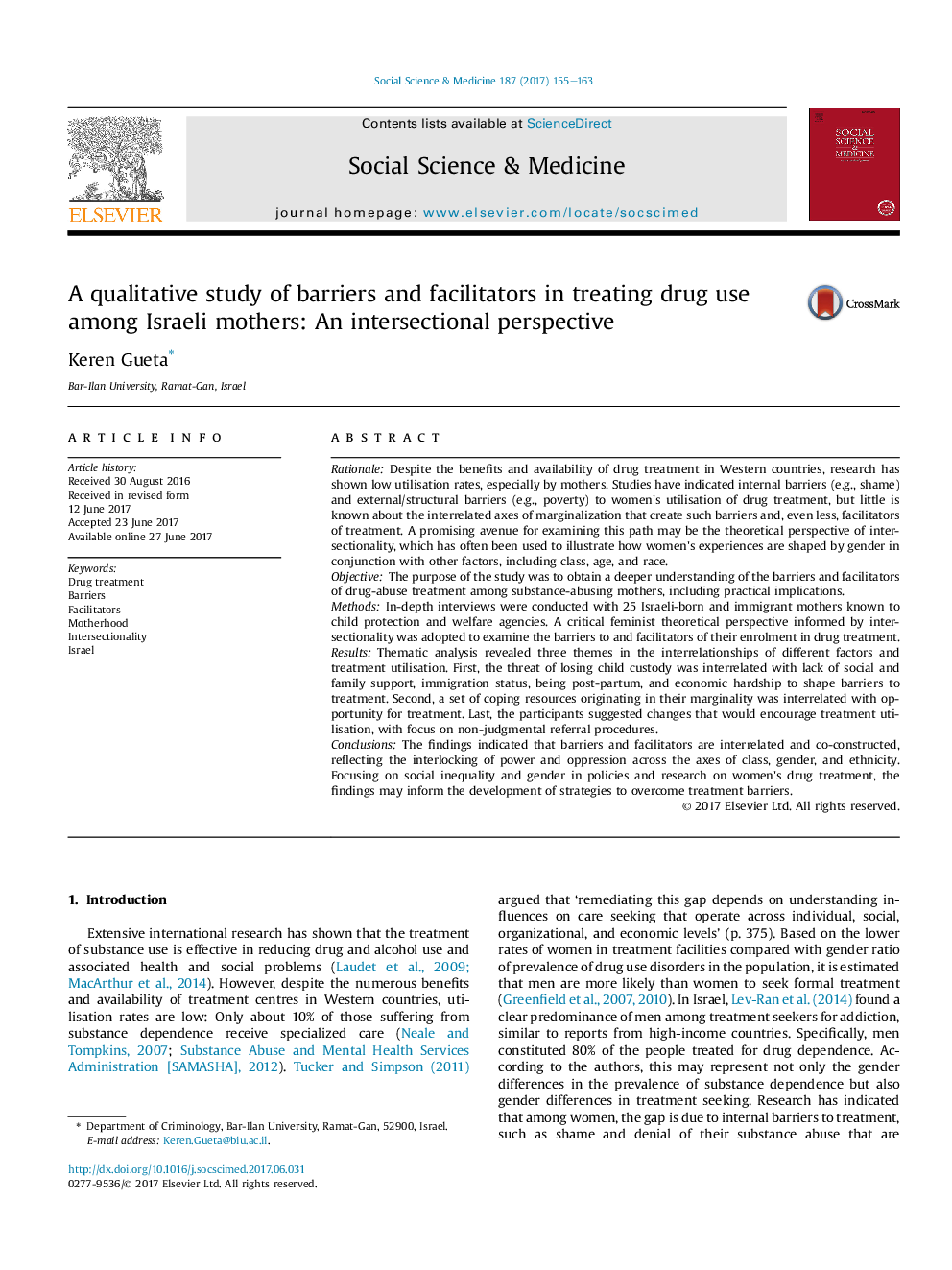| کد مقاله | کد نشریه | سال انتشار | مقاله انگلیسی | نسخه تمام متن |
|---|---|---|---|---|
| 5046472 | 1475982 | 2017 | 9 صفحه PDF | دانلود رایگان |
- Barriers and facilitators to drug treatment are interrelated and co-constructed.
- Barriers are shaped by motherhood, poverty, immigration and lack of support.
- Facilitators are shaped by motherhood and treatment availability.
- A cooperative, nonjudgmental and individualized approach may challenge barriers.
RationaleDespite the benefits and availability of drug treatment in Western countries, research has shown low utilisation rates, especially by mothers. Studies have indicated internal barriers (e.g., shame) and external/structural barriers (e.g., poverty) to women's utilisation of drug treatment, but little is known about the interrelated axes of marginalization that create such barriers and, even less, facilitators of treatment. A promising avenue for examining this path may be the theoretical perspective of intersectionality, which has often been used to illustrate how women's experiences are shaped by gender in conjunction with other factors, including class, age, and race.ObjectiveThe purpose of the study was to obtain a deeper understanding of the barriers and facilitators of drug-abuse treatment among substance-abusing mothers, including practical implications.MethodsIn-depth interviews were conducted with 25 Israeli-born and immigrant mothers known to child protection and welfare agencies. A critical feminist theoretical perspective informed by intersectionality was adopted to examine the barriers to and facilitators of their enrolment in drug treatment.ResultsThematic analysis revealed three themes in the interrelationships of different factors and treatment utilisation. First, the threat of losing child custody was interrelated with lack of social and family support, immigration status, being post-partum, and economic hardship to shape barriers to treatment. Second, a set of coping resources originating in their marginality was interrelated with opportunity for treatment. Last, the participants suggested changes that would encourage treatment utilisation, with focus on non-judgmental referral procedures.ConclusionsThe findings indicated that barriers and facilitators are interrelated and co-constructed, reflecting the interlocking of power and oppression across the axes of class, gender, and ethnicity. Focusing on social inequality and gender in policies and research on women's drug treatment, the findings may inform the development of strategies to overcome treatment barriers.
Journal: Social Science & Medicine - Volume 187, August 2017, Pages 155-163
